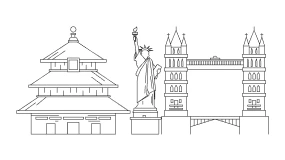Saas Statistics 2025: Market Size, Industry Growth, Usage and Adoption
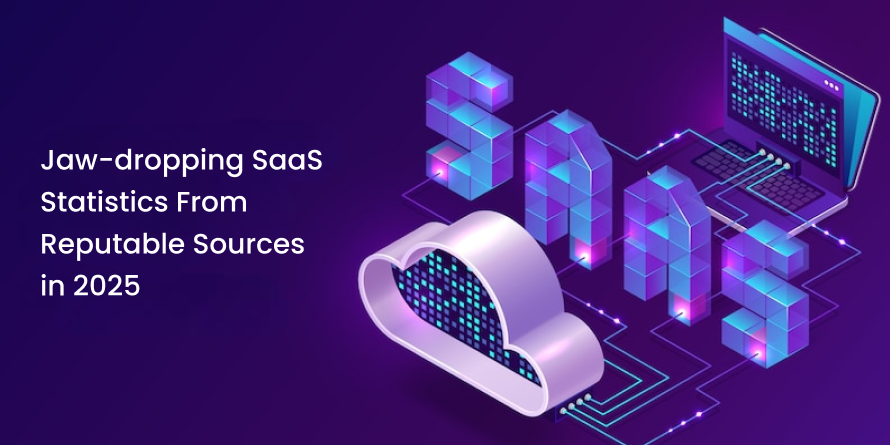
SaaS is becoming as Ubiquitous as modern technology solutions.
SaaS is reshaping the modern business environment, opening up new possibilities and creating lucrative opportunities across diverse sectors. This strategic development of software in all business areas is not merely a technological upgrade but a magical rethinking of how, especially, small and medium organizations use modern software solutions to streamline business operations and customer interaction fundamentally.
As the world navigates through drastic challenges such as the coronavirus pandemic, SaaS business models and solutions have proven fruitful for sustaining operations and fostering resilience, proved by the growing resilience of readymade and subscription-based solutions.
Just look around the desk: Zapier, Asana, Salesforce, HubSpot, Adobe and other popular SaaS app examples that have been changing the way people interact, assign and track tasks, and much more. More than 90% of organizations consider SaaS a game-changing solution in the emerging tech landscape.
With that in mind, here are 25+ impressive statistics that show the impact of SaaS in 2025.
What is Software as a Service (SaaS)?
Software-as-a-Service refers to a cloud-based software delivery model where applications are hosted by a vendor and made available to users and business owners over the Internet. This aligns with the standard SaaS meaning, where the software provider is responsible for managing the technical aspects, infrastructure, and data.
This means that users don’t need to handle installation, maintenance, or management of the software themselves. Instead, users access the application through a web browser or a client.
Unlike traditional software licensing, SaaS consists of buying a license for each user or device and managing installation and updates in-house. With SaaS, users pay for the solution on a subscription basis, which can be more economical, and flexible.
The subscription model usually includes updates and dedicated support, which the software provider handles.
SaaS Industry Growth Statistics
There is no question that the SaaS industry is growing, as Statista projects that global revenue already surpass $253.90 billion in 2023, with an annual growth rate of 7.89%. Here, we examine the most recent data and statistics that offer a more thorough understanding of current and future SaaS trends.
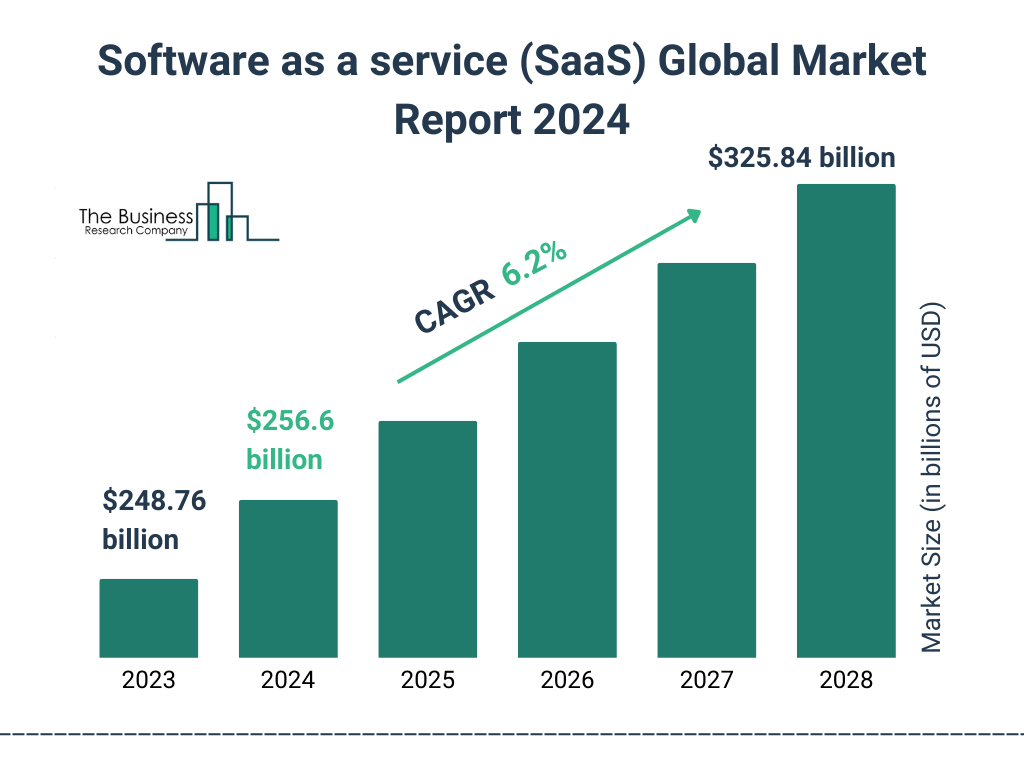
Data for the upcoming years show even more promise, with a projected market volume of $344 billion by 2027. 2025 appears to be a bright year for SaaS companies. This amounts to $72.94 on average per employee in 2023, and that amount will increase dramatically over the following five years.
Since 2018, the annual growth rate of the SaaS industry has surpassed what many thought possible, with a massive 18.7% revenue change.
SaaS companies are growing and different segments dominate the market. For instance,
- With more than 24,000 companies operating in productivity tools and collaboration segment
- 17,000+ companies like Salesforce in the customer service segment
- 15,000+ in marketing software
- 14,000 in eCommerce
- And 12,000 in Data and Analytics
The above-mentioned figures not only show growth but also changing expectations and opportunities for SaaS companies and their customer success team.
Moreover, according to the report released by BetterCloud, more than 94% of companies are planning to expand their tech stack in the next two years.
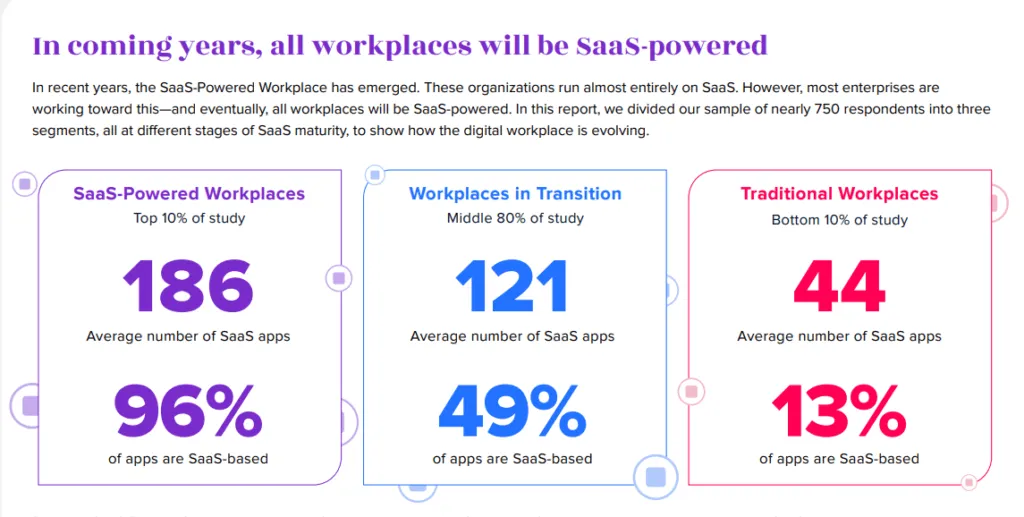
1. And half of the companies will start to use SaaS apps before 2026.
2. Up to 99% of businesses will be using at least one SaaS solution by the end of 2025, driven by a number of factors such as cost-effectiveness and scalability, accessibility and mobility, rapid innovation and updates, simplified implementation and integration, and increased focus on customer experience.
3. SaaS adoption in the banking, financial, and insurance services sectors is expected to grow from $54 billion in 2022 to more than $130 billion in 2027.
4. In the retail and eCommerce sector, the SaaS market is predicted to grow from $48.1 billion to 138.9 billion during the same period (2022–2027).
5. Today, Microsoft holds a whopping 10% market share of global revenue, with other popular names such as IBM, Salesforce, Adobe, and Google following the race behind.
SaaS Usage and Adoption Statistics
With the rise in hybrid work since the pandemic, cloud services that streamline online collaboration have seen continued growth. SaaS software and products come into this category, offering startups and other enterprises within all types of industries the ability to access and employ software applications with the help of the Internet while eliminating the need to set up on-premise infrastructure. With the increasing demand for SaaS solutions, businesses are now focusing on SaaS app development to create customized, scalable, and user-friendly applications tailored to their specific needs.
If you’re planning to launch your own solution, understanding how to build SaaS app effectively is a crucial first step in ensuring long-term success.
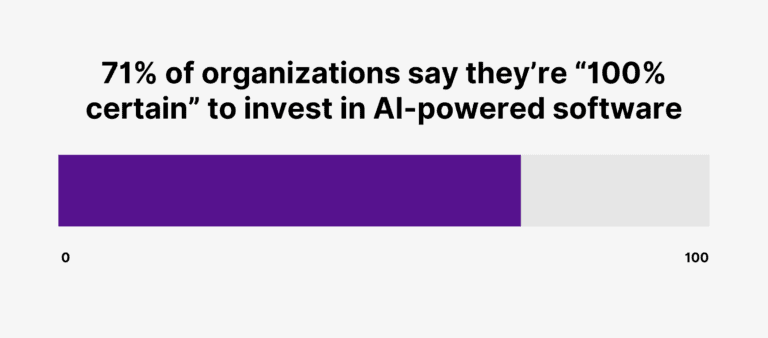
Here are some notable statistics and trends related to SaaS usage and adoption:
1. More than 80% of businesses use at least one SaaS application in their operations and around 88% use cloud services in any form.
2. According to businesses that utilize them, up to 70% of apps are SaaS-based, and by 2025, that number is expected to rise to 85%.
3. While medium-sized to small enterprises estimate that 45% of all software is on the cloud, large organizations with over 10,000 people typically use 447 SaaS apps.
4. Among the sectors with the highest rates of SaaS adoption are technology, marketing and advertising, healthcare, education, financial services, retail and eCommerce, and manufacturing.
5. It is estimated that there are over 14 billion SaaS product users worldwide.
6. On average 71% of organizations admit they are “100% certain” or “extremely likely” to invest in SaaS-based software in the years to come.
7. According to 56% of organizational tech leaders, business suites like Office 365 and Google Workspace are over-licensed and underutilized. 40% of enterprise tech leaders agree that collaboration apps come in second.
8. The healthcare sector is using SaaS solutions at a 20% annual growth rate.
9. According to 70% of CIOs, the two main reasons people choose SaaS products are scalability and agility.
10. IT maintenance expenses can be decreased by 16.1% by switching to a SaaS-based system.
Saas Market Size by Country
Businesses from all over the world are implementing cloud-based solutions to enhance their operations, making the SaaS sector a worldwide phenomenon.
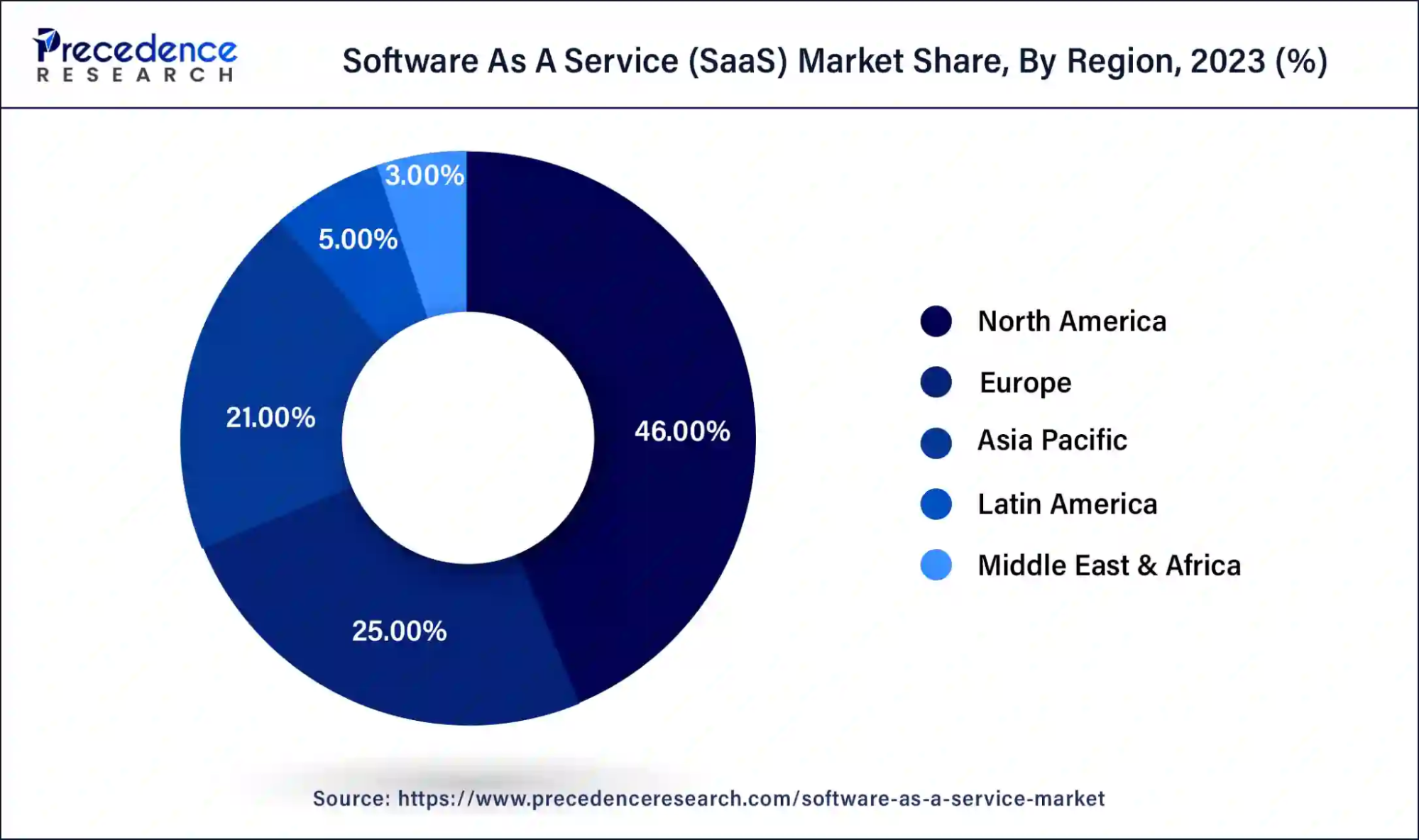
1. The United States is home to 56.67% of all SaaS businesses. About 17,000 of the 30,000 SaaS businesses in the world today are represented by this.
2. With 2,341, the UK has the second-highest number of SaaS companies, after the US. The US market has a significant lead. Comprising over 14 billion clients worldwide, compared to just 3 billion in the UK. (Statista)
3. As of September 2023, Adobe Inc. is the biggest SaaS company listed on the US stock exchange. The market value of the business is $255.4 billion. Salesforce, which has a $218.7 billion market capitalization, comes next.
4. Over 42 businesses in China’s SaaS sector generate more than $15 million in annual revenue.
5. By 2026, the Indian SaaS market is expected to generate $100 billion in sales.
6. By 2025, the European SaaS market is predicted to have more than doubled in size. With a rise from €6.85 billion to €16.3 billion in 2025, Germany is anticipated to take the lead. (Statista)
7. The African market is not behind the race as it is projected to grow from $1.1 billion in 2023 to $1.58 billion by 2027.
Also Read: SaaS vs PaaS vs IaaS: Which One to Choose?
In Closing: SaaS is the Future
Currently, the SaaS industry is undergoing its most significant transformation to date. Valuation multiples are once again beginning to show promise. More SaaS companies are integrating AI capabilities into their products, which is causing a stir in the industry.
You don’t want to lose your business. All of these changes are illustrated by the software as a service statistics shared in this guide. Make well-informed decisions with these SaaS statistics to increase customer satisfaction and product growth.
One thing is evident from our analysis of SaaS trends and data: SaaS is here to stay, promoting scalability and efficiency. At Guru TechnoLabs, we value the development of SaaS applications and provide companies with specialized solutions that meet their requirements. Contact us, with our SaaS knowledge, years of experience, and enthusiasm for technology, we are dedicated to assisting companies to thrive in this revolutionary age.










